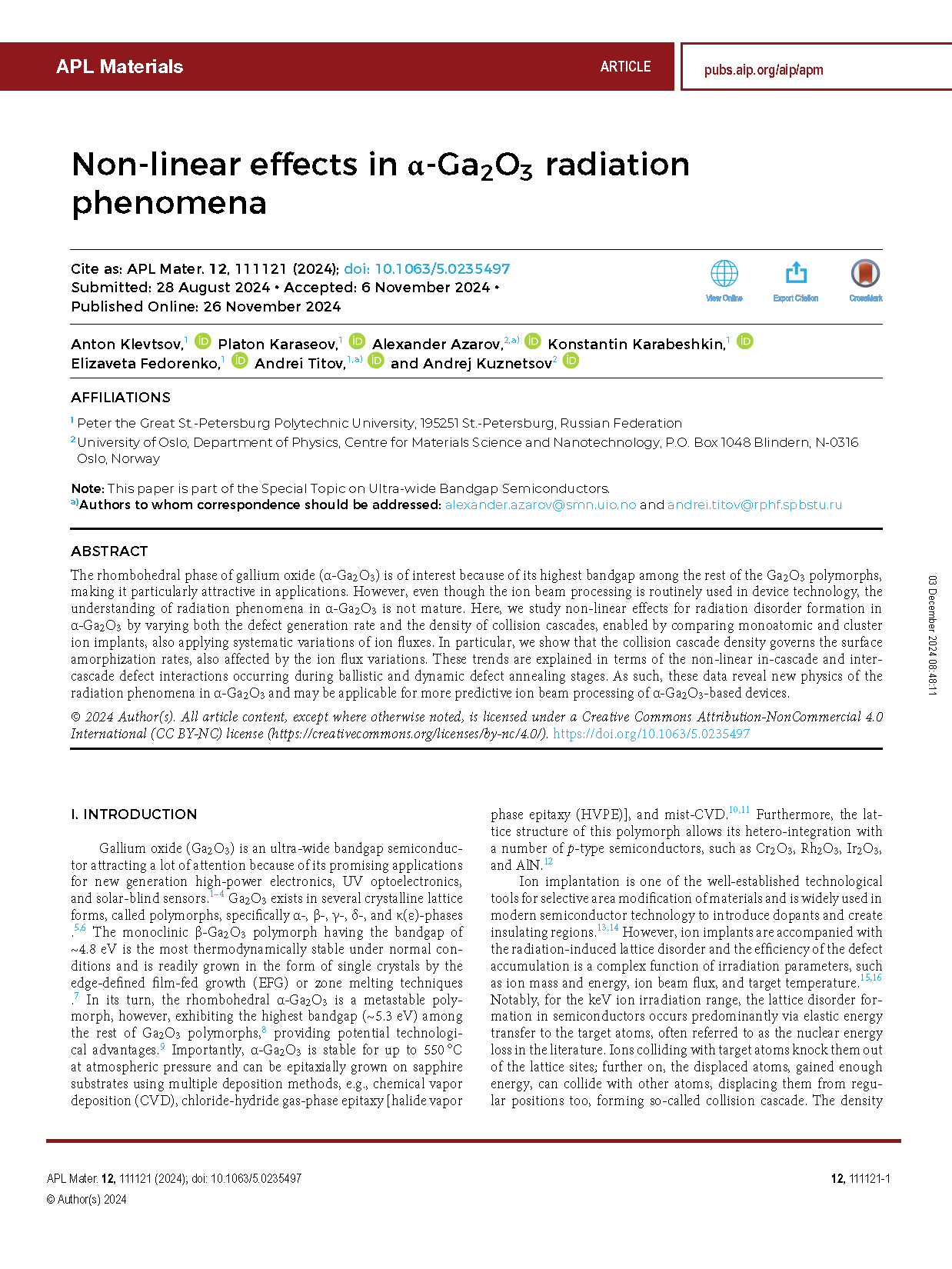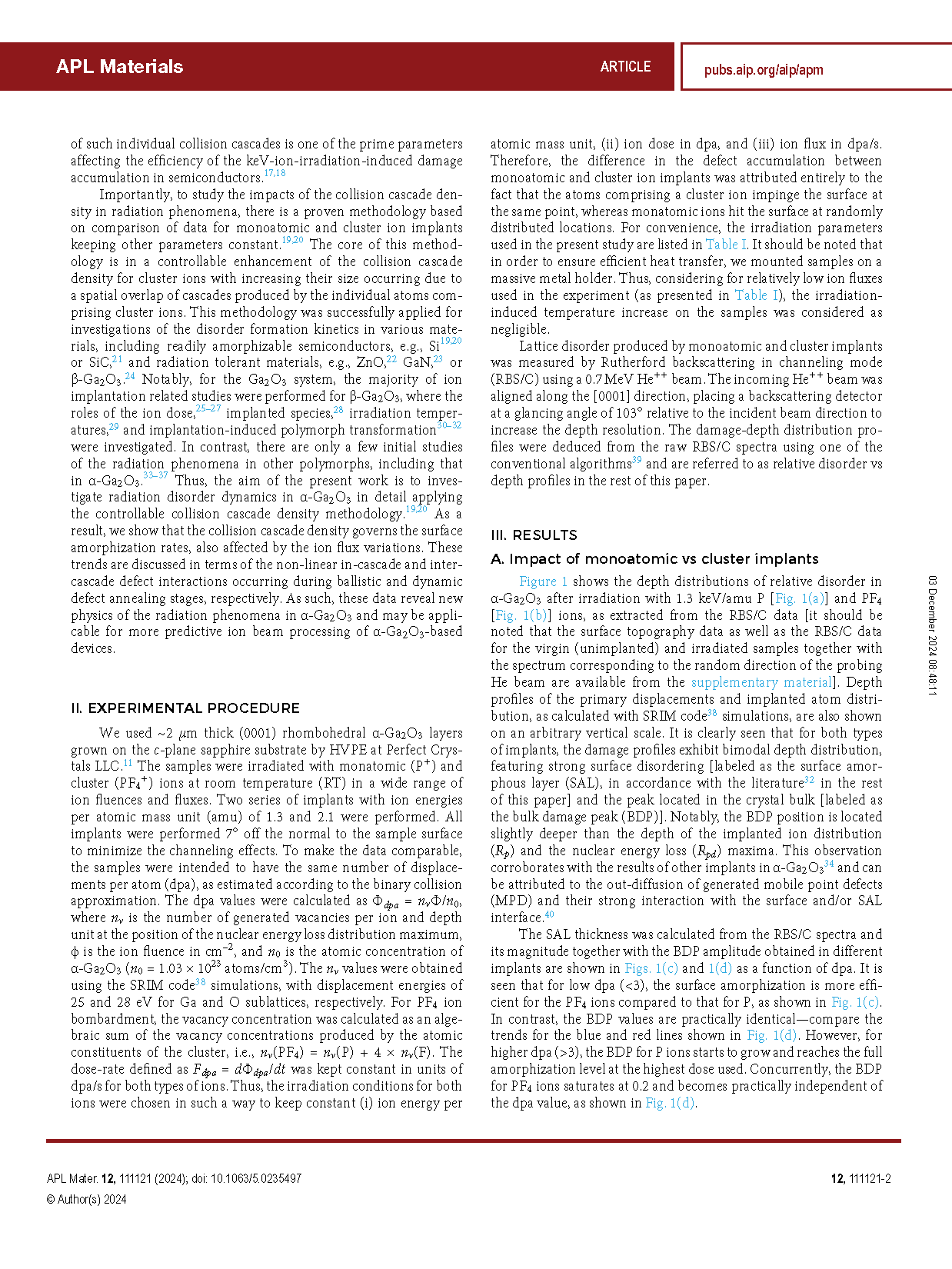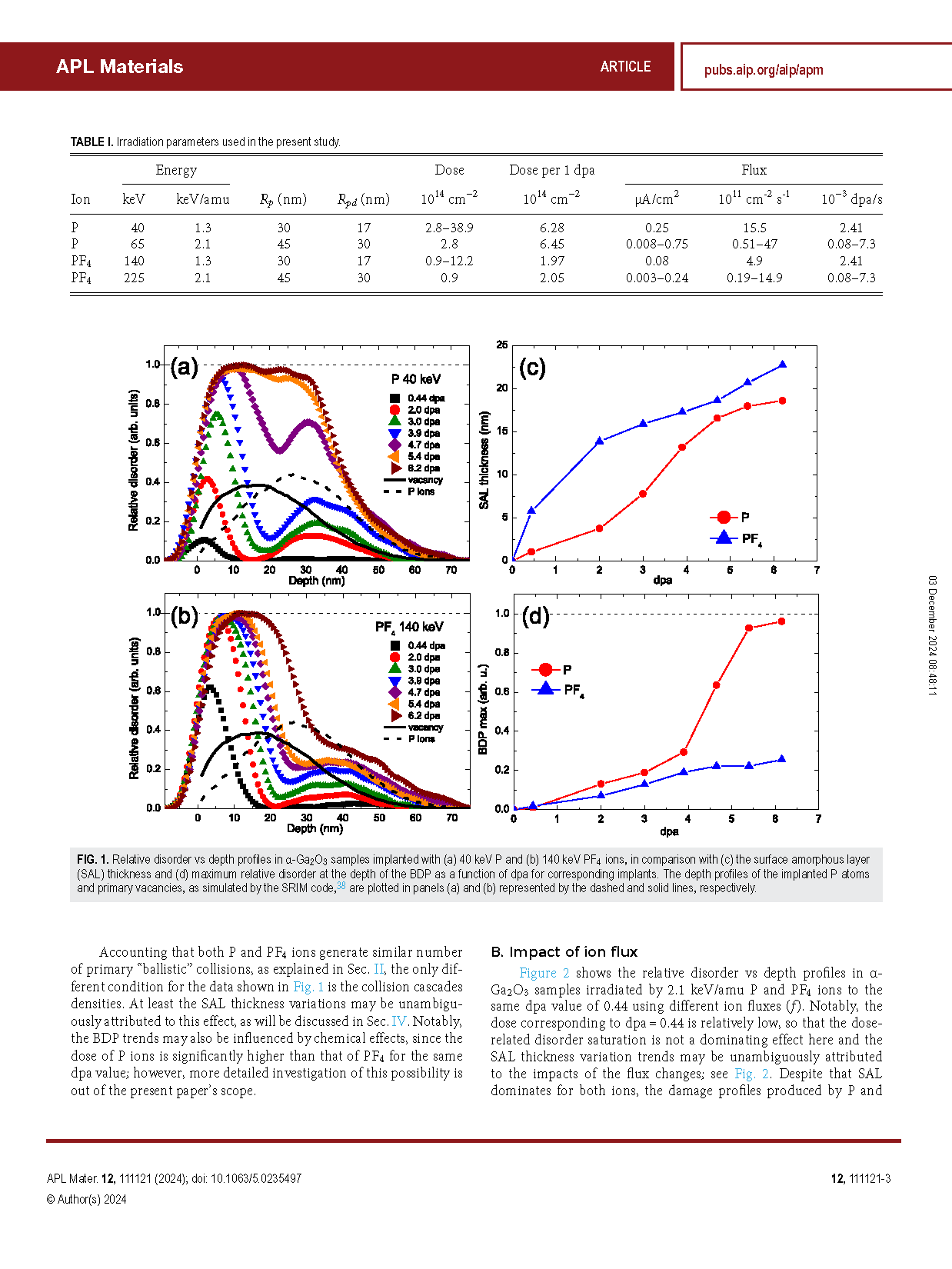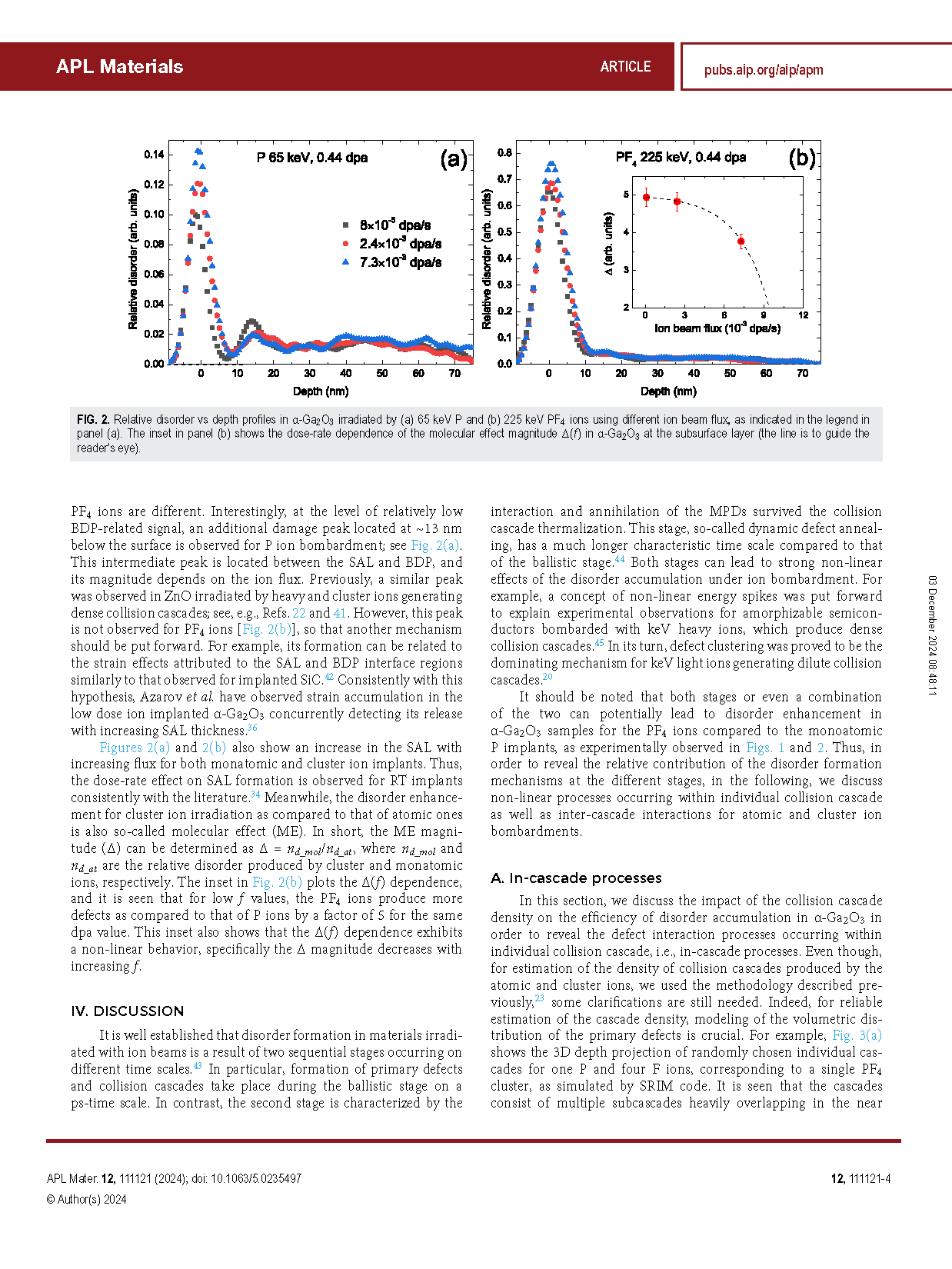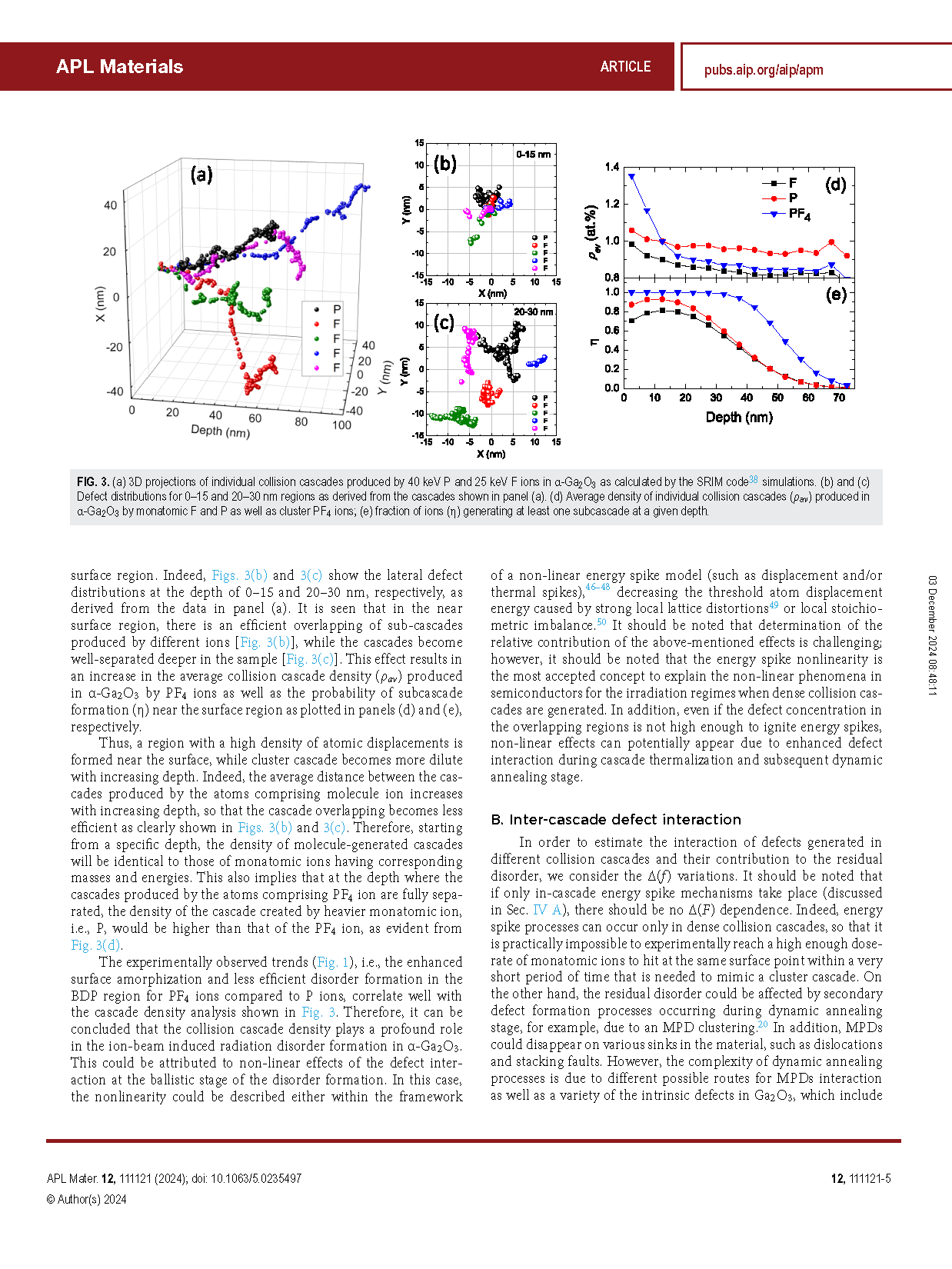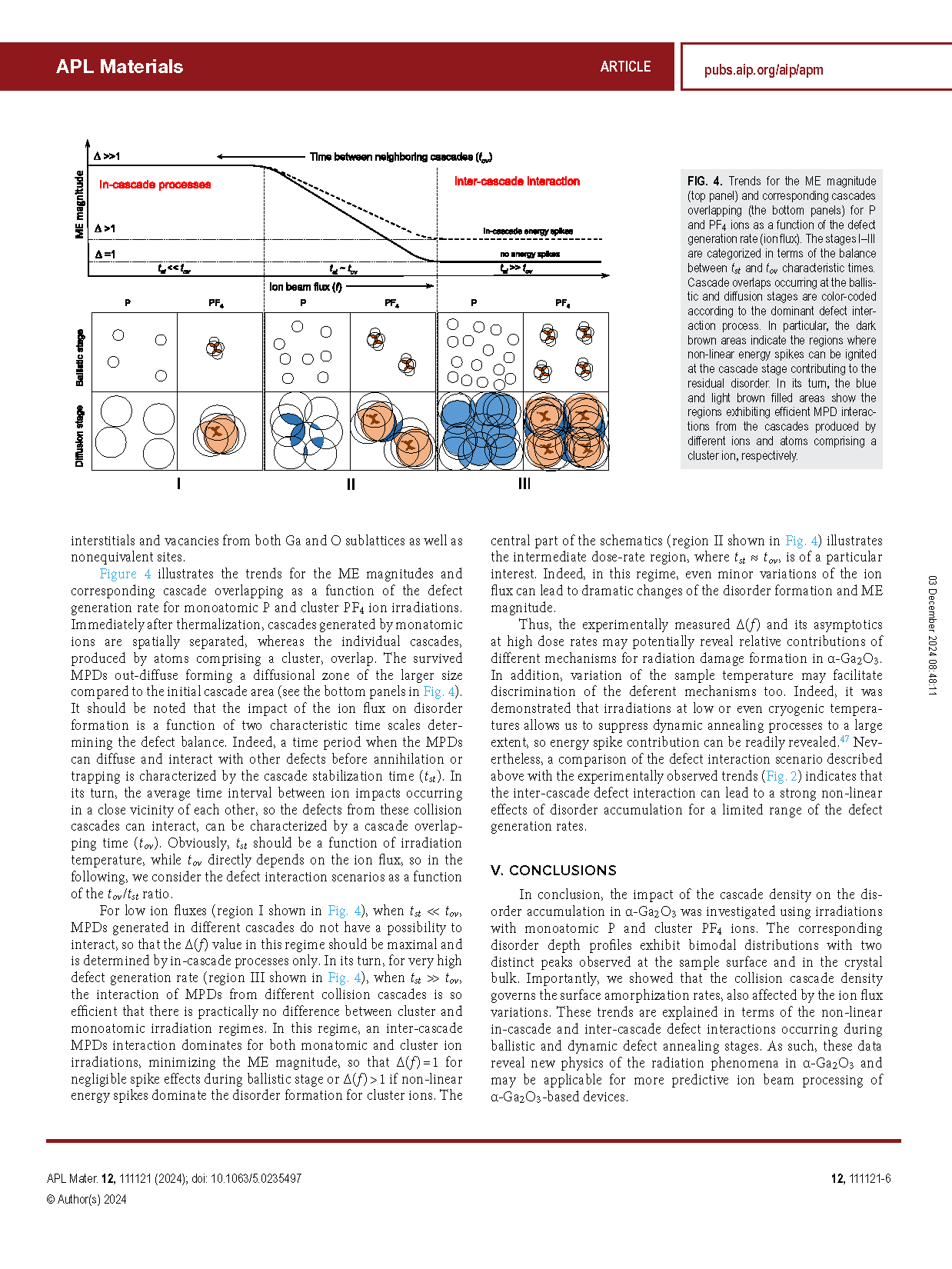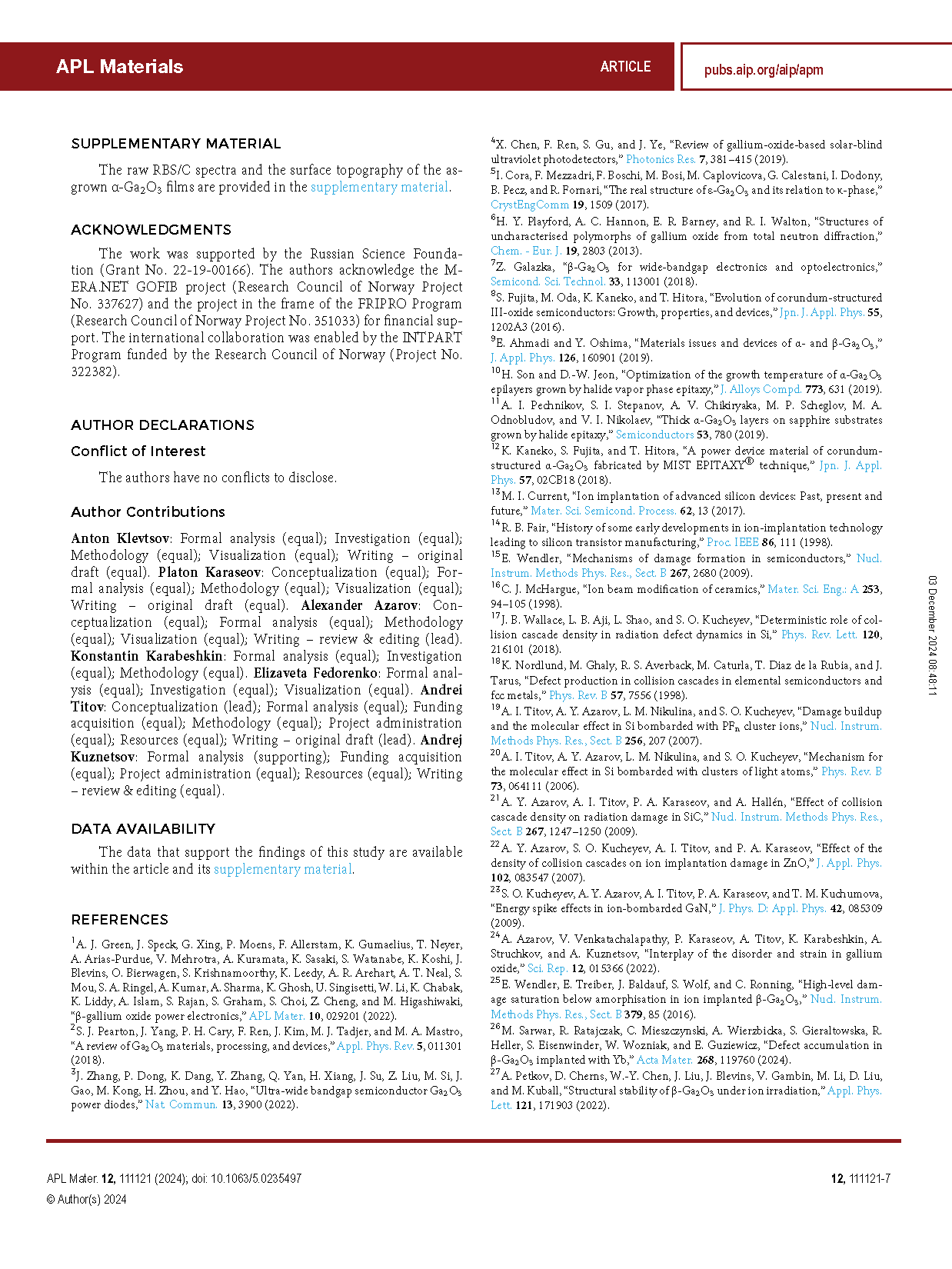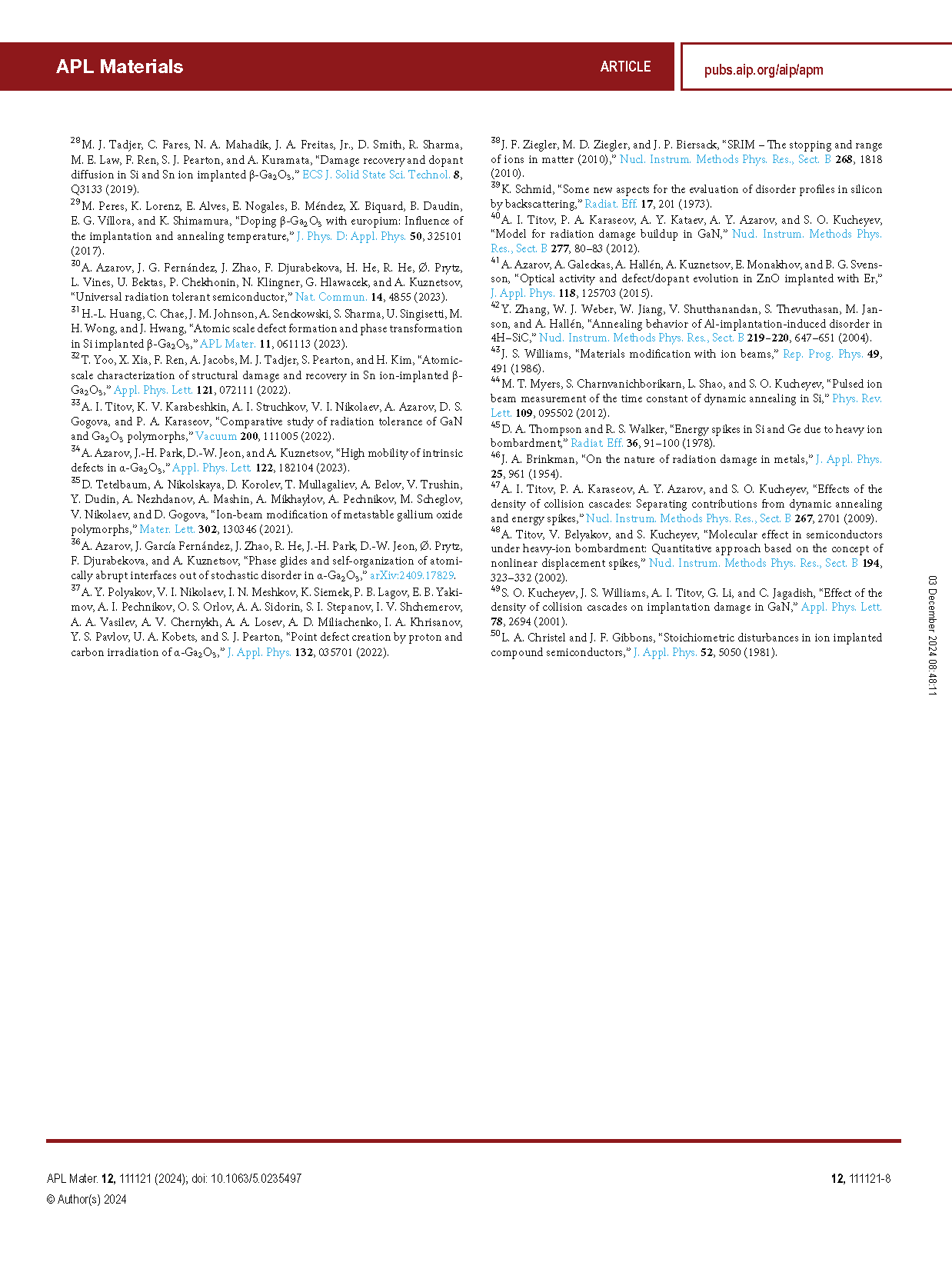
【International Papers】Non-linear effects in α-Ga₂O₃ radiation phenomena
日期:2025-01-16阅读:487
Researchers from the Peter the Great St.-Petersburg Polytechnic University have published a dissertation titled "Non-linear effects in α-Ga2O3 radiation phenomena" in APL Materials.
Abstract
The rhombohedral phase of gallium oxide (α-Ga2O3) is of interest because of its highest bandgap among the rest of the Ga2O3 polymorphs, making it particularly attractive in applications. However, even though the ion beam processing is routinely used in device technology, the understanding of radiation phenomena in α-Ga2O3 is not mature. Here, we study non-linear effects for radiation disorder formation in α-Ga2O3 by varying both the defect generation rate and the density of collision cascades, enabled by comparing monoatomic and cluster ion implants, also applying systematic variations of ion fluxes. In particular, we show that the collision cascade density governs the surface amorphization rates, also affected by the ion flux variations. These trends are explained in terms of the non-linear in-cascade and inter-cascade defect interactions occurring during ballistic and dynamic defect annealing stages. As such, these data reveal new physics of the radiation phenomena in α-Ga2O3 and may be applicable for more predictive ion beam processing of α-Ga2O3-based devices.

FIG. 1. Relative disorder vs depth profiles in α-Ga2O3 samples implanted with (a) 40 keV P and (b) 140 keV PF4 ions, in comparison with (c) the surface amorphous layer (SAL) thickness and (d) maximum relative disorder at the depth of the BDP as a function of dpa for corresponding implants. The depth profiles of the implanted P atoms and primary vacancies, as simulated by the SRIM code, are plotted in panels (a) and (b) represented by the dashed and solid lines, respectively.
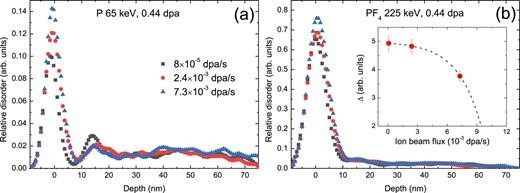
FIG. 2. Relative disorder vs depth profiles in α-Ga2O3 irradiated by (a) 65 keV P and (b) 225 keV PF4 ions using different ion beam flux, as indicated in the legend in panel (a). The inset in panel (b) shows the dose-rate dependence of the molecular effect magnitude Δ(f) in α-Ga2O3 at the subsurface layer.
DOI:
doi.org/10.1063/5.0235497
